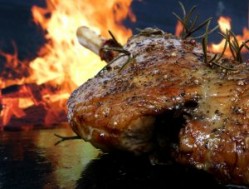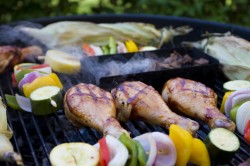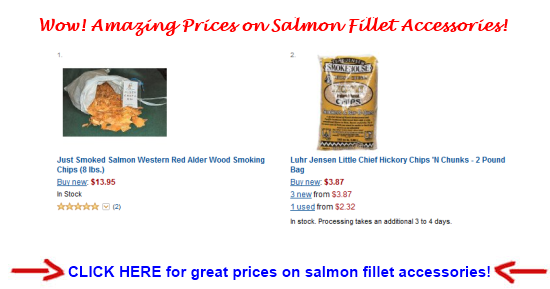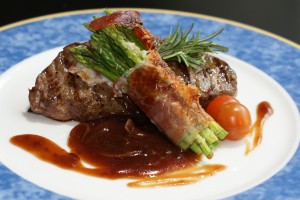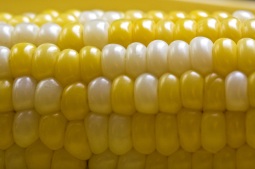What’s better after an outdoor meal in the backyard than rich, gooey s’mores? Nothing, that’s what! But there’s no need to build a campfire and sharpen sticks in order to enjoy some marshmallow and chocolatey goodness. Now you can make them right on the grill. Whether you’re having hamburgers and hot dogs or grilled salmon, s’mores will bring a smile to everybody’s face when dessert time rolls around.
Easy S’mores on the Grill
Traditional s’mores require just three ingredients: graham crackers, marshmallows, and chocolate. We like the big jumbo marshmallows, because they’ll cover the entire cracker and squish out the sides–yum! Use your favorite chocolate (milk or dark); break into cracker-sized bars.
Heat the grill to medium (or just leave it on after you finish grilling dinner) and set it up for indirect heat. Break graham crackers in half, forming squares. Top half of the squares with marshmallows and the other half with chocolate. Place crackers on the cooler side of the grill. Grill for 2-3 minutes, or until the marshmallow and chocolate have melted. Sandwich and serve!
Fancy S’mores
You can tweak the basic s’more idea to create some truly delicious concoctions. Assemble your favorite meltable candy and use in place of the chocolate. Try these ideas to tantalize your tastebuds:
- Peanut butter chips
- M&Ms
- Peppermint patties
- Heath bars
- White chocolate
- Peppermint bark
- Caramel squares
- Strawberries or bananas
- Reese’s Peanut butter cups
- Raspberry-filled chocolate squares
- Coconut
- Lemon pie filling
Try these ideas on their own or along with a square of chocolate!
S’more Buffet
Try creating a s’more buffet for a fun and easy dessert that your guests will be talking about for weeks! Assemble the above ingredients and place in individual dishes. You can also add different graham cracker varieties (regular, chocolate, cinnamon), and different marshmallow flavors or colors.
Ask each guest to assemble his or her own s’mores and bring to the grill master for grilling! This is a fantastic idea for block parties, birthday parties, or other large gatherings.
You can also try savory s’mores for a twist on these classic favorites. Use herb or whole wheat crackers, a variety of cheeses, and deli meat, bacon, or pepperoni. Use them as appetizers or as a tasty side dish when serving a less filling entree.
No one can say no to a gooey, hot s’more filled with chocolatey favorites. To guarantee a popular grand finale to your outdoor dinner, add s’mores to the menu!

